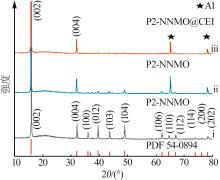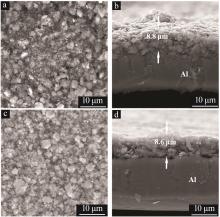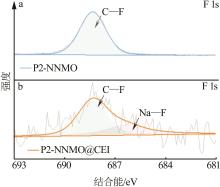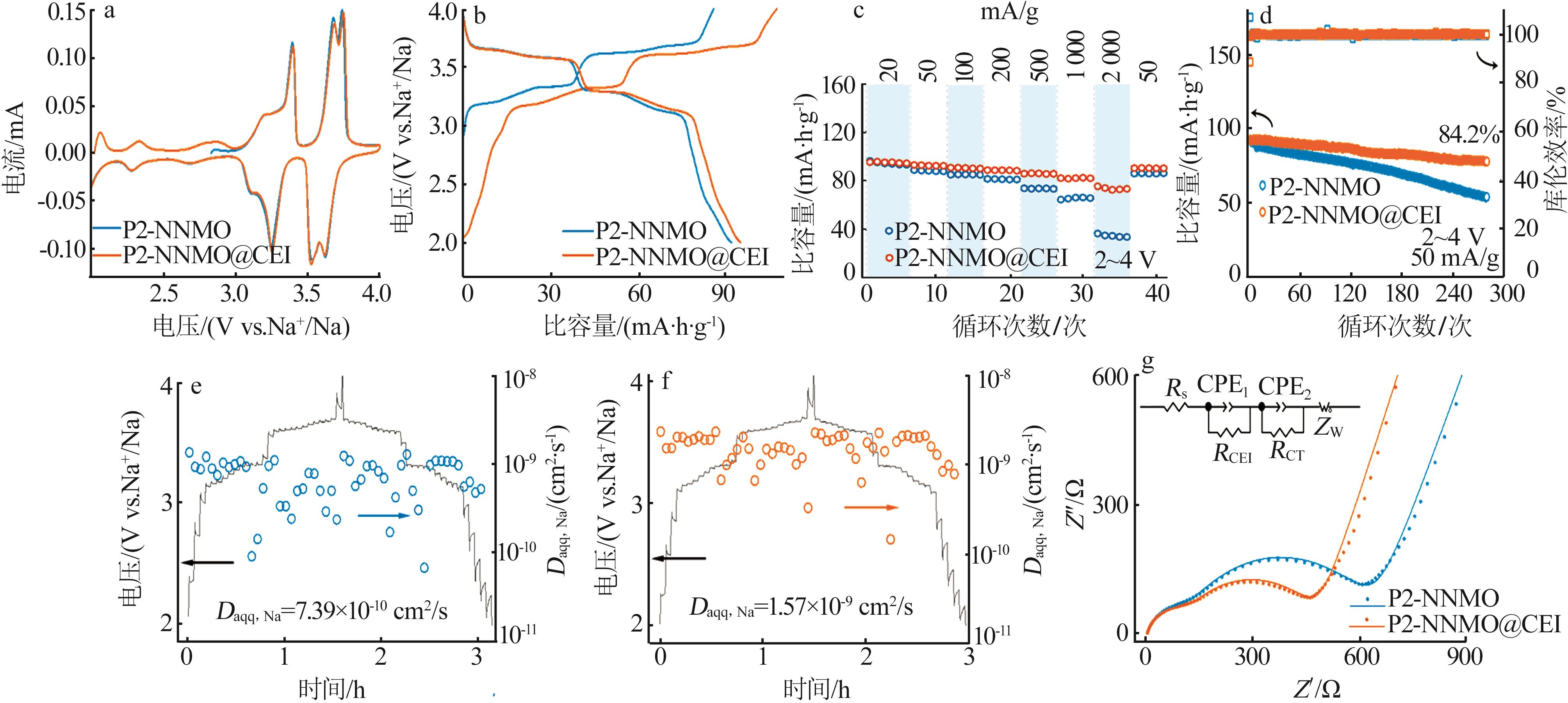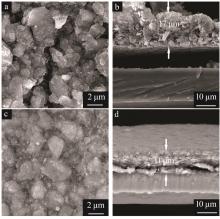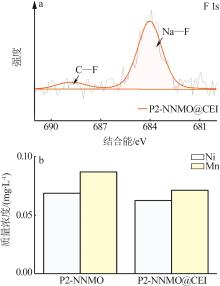| 1 |
梁叔全,程一兵,方国赵,等.能源光电转换与大规模储能二次电池关键材料的研究进展[J].中国有色金属学报,2019,29(9):2064-2114.
|
|
LIANG Shuquan, CHENG Yibing, FANG Guozhao,et al.Research progress of key materials for energy photoelectric conversion and large-scale energy storage secondary batteries[J].The Chinese Journal of Nonferrous Metals,2019,29(9):2064-2114.
|
| 2 |
FU Hongwei, WANG Yunpeng, FAN Guozheng,et al.Synergetic stability enhancement with magnesium and calcium ion substitution for Ni/Mn-based P2-type sodium-ion battery cathodes[J].Chemical Science,2022,13(3):726-736.
|
| 3 |
WANG Wanlin, GANG Yong, HU Zhe,et al.Reversible structural evolution of sodium-rich rhombohedral prussian blue for sodium-ion batteries[J].Nature Communications,2020,11:980.
|
| 4 |
REN Wen, QIN Mulan, ZHOU Yifan,et al.Electrospun Na4Fe3(PO4)2(P2O7) nanofibers as free-standing cathodes for ultralong-life and high-rate sodium-ion batteries[J].Energy Storage Materials,2023,54:776-783.
|
| 5 |
龙云飞,苏静,吕小艳,等.锂/钠离子电池过渡金属氟磷酸盐正极材料研究进展[J].无机盐工业,2020,52(3):28-34,38.
|
|
LONG Yunfei, SU Jing, Xiaoyan LÜ,et al.Advances in transition metal fluoride phosphate cathode materials for lithium-ion batteries and sodium-ion batteries[J].Inorganic Chemicals Industry,2020,52(3):28-34,38.
|
| 6 |
WANG Pengfei, YOU Ya, YIN Yaxia,et al.Layered oxide cathodes for sodium-ion batteries:Phase transition,air stability,and performance[J].Advanced Energy Materials,2018,8(8):1701912.
|
| 7 |
ZHANG Jiaolong, WANG Wenhui, WANG Wei,et al.Comprehensive review of P2-type Na2/3Ni1/3Mn2/3O2,a potential cathode for practical application of Na-ion batteries[J].ACS Applied Materials & Interfaces,2019,11(25):22051-22066.
|
| 8 |
WANG Enhui, NIU Yubin, YIN Yaxia,et al.Manipulating electrode/electrolyte interphases of sodium-ion batteries:Strategies and perspectives[J].ACS Materials Letters,2021,3(1):18-41.
|
| 9 |
HUANG Yongxin, ZHAO Luzi, LI Li,et al.Electrolytes and electrolyte/electrode interfaces in sodium-ion batteries:From scientific research to practical application[J].Advanced Materials,2019,31(21):1808393.
|
| 10 |
DANG Rongbin, LI Qi, CHEN Minmin,et al.CuO-coated and Cu2+-doped Co-modified P2-type Na2/3[Ni1/3Mn2/3]O2 for sodi-um-ion batteries[J].Physical Chemistry Chemical Physics,2019,21(1):314-321.
|
| 11 |
DANG Rongbin, CHEN Minmin, LI Qi,et al.Na+-conductive Na2Ti3O7-modified P2-type Na2/3Ni1/3Mn2/3O2 via a smart in situ coating approach:Suppressing Na+/vacancy ordering and P2-O2 phase transition[J].ACS Applied Materials & Interfaces,2019,11(1):856-864.
|
| 12 |
KALIYAPPAN K, LI Gaoran, YANG Lin,et al.An ion conductive polyimide encapsulation:New insight and significant performance enhancement of sodium based P2 layered cathodes[J].Energy Storage Materials,2019,22:168-178.
|
| 13 |
XIA Jiuyang, WU Wenwei, FANG Kaixin,et al.Enhancing the interfacial stability of P2-type cathodes by polydopamine-derived carbon coating for achieving performance improvement[J].Carbon,2020,157:693-702.
|
| 14 |
JO J H, CHOI J U, KONAROV A,et al.Sodium-ion batteries:Building effective layered cathode materials with long-term cycling by modifying the surface via sodium phosphate[J].Advanced Functional Materials,2018,28(14):1705968.
|
| 15 |
JO C H, JO J H, YASHIRO H,et al.Bioinspired surface layer for the cathode material of high-energy-density sodium-ion batteri-es[J].Advanced Energy Materials,2018,8(13):1702942.
|
| 16 |
MU Linqin, RAHMAN M M, ZHANG Yan,et al.Surface transformation by a“cocktail” solvent enables stable cathode materials for sodium ion batteries[J].Journal of Materials Chemistry A,2018,6(6):2758-2766.
|
| 17 |
MU Linqin, FENG Xu, KOU Ronghui,et al.Deciphering the cathode-electrolyte interfacial chemistry in sodium layered cathode materials[J].Advanced Energy Materials,2018,8(34):1801975.
|
| 18 |
LIU Xiaoxiao, TAN Yuchen, LIU Tongchao,et al.A simple electrode-level chemical presodiation route by solution spraying to improve the energy density of sodium-ion batteries[J].Advanced Functional Materials,2019,29(50):1903795.
|
| 19 |
LIU Yao, WU Xiangyong, MOEEZ A,et al.Na-rich Na3V2(PO4)3 cathodes for long cycling rechargeable sodium full cells[J].Advanced Energy Materials,2023,13(3):2203083.
|
| 20 |
YE Minghui, YOU Shunzhang, XIONG Jiaming,et al. In situ construction of a NaF-rich cathode-electrolyte interface on Prussian blue toward a 3000-cycle-life sodium-ion battery[J].Materials Today Energy,2022,23:100898.
|
| 21 |
LIU Zhengbo, SHEN Jiadong, FENG Shihui,et al.Ultralow volume change of P2-type layered oxide cathode for Na-ion batteries with controlled phase transition by regulating distribution of Na[J].Angewandte Chemie(International Ed.in English),2021,60(38):20960-20969.
|
| 22 |
LIU Zhengbo, ZHOU Chaojin, LIU Jun,et al.Phase tuning of P2/O3 - type layered oxide cathode for sodium ion batteries via a simple Li/F co-doping route[J].Chemical Engineering Journal,2022,431:134273.
|
 ), SHI Xueru, WEI Shubing, CAO Xinxin(
), SHI Xueru, WEI Shubing, CAO Xinxin( )
)
